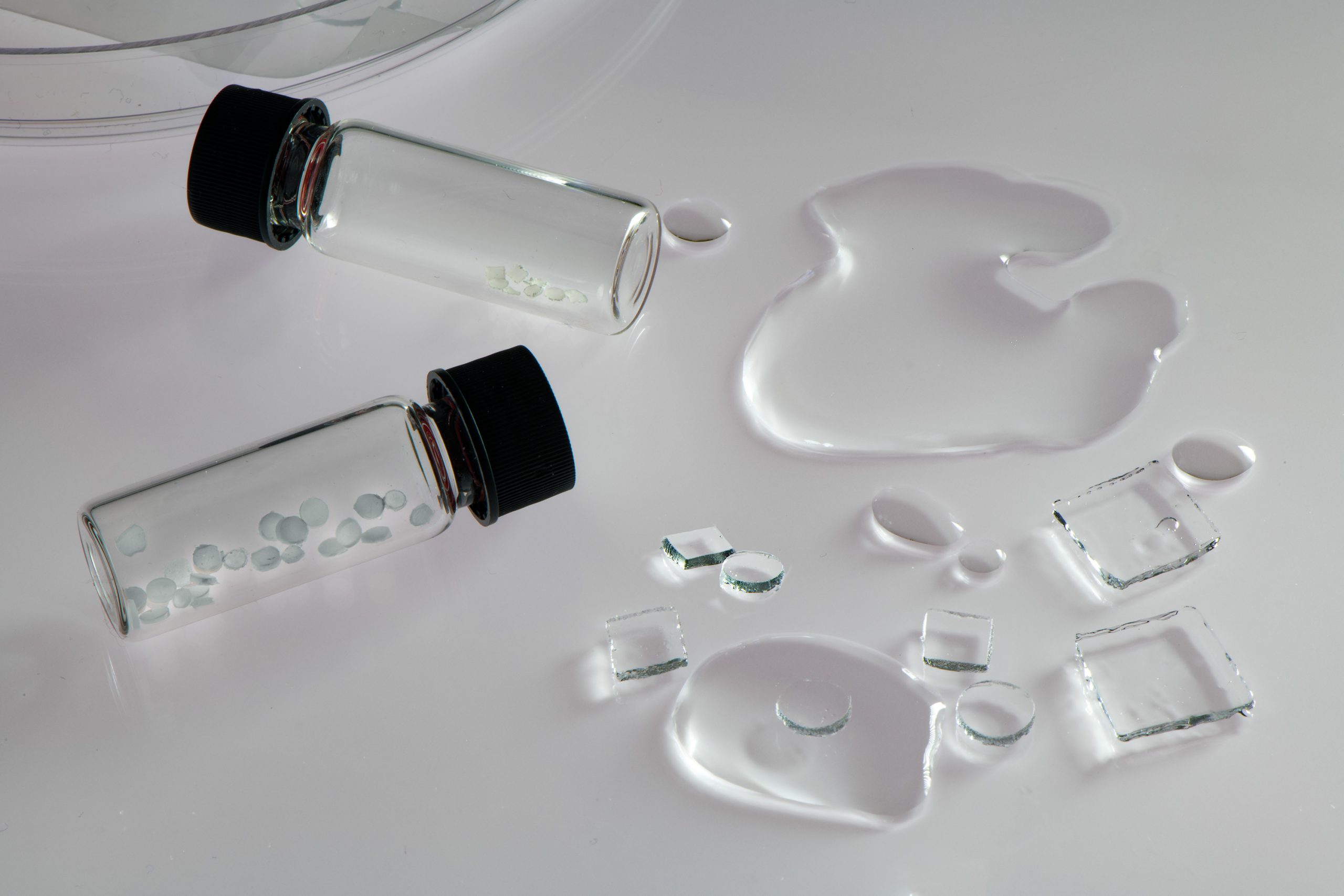
Smart Hydrogels: A Revolutionary Approach in Regenerative Medicine
Barkat Health & Pharmaceutical Group: With continuous advancements in materials science and nanotechnology, particularly in the medical field, novel strategies for treating and repairing tissues have been developed. Among these, smart hydrogels have emerged as a promising solution for tissue regeneration and cartilage repair. These advanced biomaterials possess unique properties that enable them to respond dynamically to environmental stimuli such as temperature, pH, and ionic concentration, facilitating accelerated healing processes.
This essay explores the multifaceted role of smart hydrogels and nanocomposites in tissue regeneration and cartilage repair. Additionally, it discusses strategies for optimizing their application and highlights the potential of leveraging domestic resources to advance this cutting-edge technology.
A New Era in Biomaterials for Tissue Repair
Hydrogels are highly water-absorbent polymeric networks that can undergo volumetric and structural changes in response to environmental fluctuations. Smart hydrogels, a specialized subset of these materials, exhibit tailored responsiveness to physical and chemical stimuli such as temperature shifts, pH variations, and specific molecular interactions. These dynamic properties make them ideal candidates for biomedical applications, particularly in tissue engineering and regenerative medicine.
The Mechanism Behind Smart Hydrogels
Smart hydrogels function by modulating their physical and mechanical properties in response to surrounding conditions. For instance:
- Thermo-responsive hydrogels undergo phase transitions at specific temperatures, allowing controlled drug release and scaffold formation.
- pH-sensitive hydrogels alter their swelling behavior in response to pH variations, facilitating targeted therapy in inflammatory or diseased tissues.
- Ion-responsive hydrogels interact with charged molecules, promoting localized cellular interactions essential for tissue regeneration.
These attributes enable smart hydrogels to mimic the natural extracellular matrix (ECM), providing a supportive environment for cell proliferation, differentiation, and tissue repair.
Smart Hydrogels in Cartilage Repair & Tissue Regeneration
In conditions like osteoarthritis, where articular cartilage undergoes progressive degeneration, conventional treatments such as anti-inflammatory drugs or surgical interventions provide only temporary relief without promoting actual tissue regeneration. Smart hydrogels offer a biocompatible and bioactive scaffold that supports the restoration of damaged cartilage by promoting cellular adhesion, proliferation, and extracellular matrix production.
Role of Hydrogels in Cartilage Tissue Engineering
Cartilage regeneration presents significant challenges due to its avascular nature, limiting its self-healing capacity. Smart hydrogels address this issue through:
- Controlled Drug and Growth Factor Delivery: These hydrogels encapsulate bioactive molecules such as transforming growth factor-beta (TGF-β) and bone morphogenetic proteins (BMPs), promoting chondrogenic differentiation of stem cells.
- Injectable Hydrogel Scaffolds: Thermo-responsive hydrogels, injected in liquid form, solidify at body temperature, forming a scaffold that integrates seamlessly with surrounding cartilage.
- Biomechanical Enhancement: Hydrogels engineered with reinforced nanostructures mimic the mechanical properties of natural cartilage, preventing implant degradation under mechanical stress.
Expanding Beyond Cartilage: Wound Healing & Soft Tissue Regeneration
Beyond cartilage repair, smart hydrogels are extensively utilized in wound healing by facilitating moisture retention, antibacterial activity, and cellular migration. These hydrogels create an optimal healing environment by:
- Sustained Release of Bioactive Agents: Delivering antimicrobial peptides, growth factors, and anti-inflammatory agents over extended periods.
- Real-time Adaptation to Wound pH and Temperature: Enhancing wound closure by responding to infection-induced pH changes.
- Biodegradability and Tissue Integration: Ensuring seamless incorporation into regenerating tissue without inducing foreign body reactions.
Nanocomposites: Enhancing Hydrogel Performance to the Next Level
One of the most effective strategies to enhance the functionality of smart hydrogels is their integration with nanocomposites. These hybrid materials exhibit superior mechanical strength, bioactivity, and controlled degradation, addressing the inherent limitations of pure hydrogels.
Nanoparticle-Enhanced Hydrogels
Incorporating nanoparticles such as:
- Silica and carbon-based nanostructures improves mechanical resilience, making hydrogels more suitable for load-bearing applications in cartilage repair.
- Metallic nanoparticles (e.g., silver, gold, and zinc oxide) impart antimicrobial properties, crucial for preventing post-surgical infections.
- Magnetic and conductive nanoparticles enable external modulation for precise control over hydrogel behavior, particularly in neuronal and musculoskeletal regeneration.
Cellular Response & Matrix Stimulation
Nanocomposite hydrogels actively stimulate cell differentiation and ECM production, expediting the repair process. For example:
- Graphene oxide-loaded hydrogels enhance mesenchymal stem cell (MSC) chondrogenesis, aiding cartilage regeneration.
- Hydroxyapatite-based nanocomposites promote osteochondral interface integration, essential for joint resurfacing.
Overcoming Challenges & Paving the Way for the Future
Despite their immense potential, several challenges hinder the widespread clinical adoption of smart hydrogels:
Longevity and Stability in Biological Systems
One of the primary limitations is long-term stability and biodegradability. Hydrogels must persist in the targeted area for extended periods while maintaining their functionality. Future research should focus on:
- Cross-linking strategies to enhance mechanical durability.
- Controlled degradation kinetics ensuring synchronized tissue integration.
- Non-toxic degradation byproducts preventing inflammatory responses.
Precision & Personalized Medicine
Smart hydrogels should be tailored to individual patient conditions, necessitating advancements in:
- 3D Bioprinting Techniques to fabricate patient-specific hydrogel scaffolds.
- Smart Drug Delivery Systems for personalized regenerative therapy.
- Artificial Intelligence (AI)-Driven Hydrogel Design for optimizing material properties.
Clinical Translation and Regulatory Hurdles
While laboratory studies demonstrate promising results, translating hydrogel technology into clinically approved therapies requires overcoming regulatory challenges:
- Standardization of Biocompatibility Testing to ensure safety across diverse patient populations.
- Scalability and Cost-Effectiveness to make hydrogel-based therapies commercially viable.
- Long-Term In Vivo Studies validating efficacy in human subjects.
Iran’s Potential in Advancing Smart Hydrogel Research
Iran possesses a strong scientific foundation in nanotechnology and biomaterials, positioning it as a key player in hydrogel research and development. Several factors contribute to this potential:
- Growing Research and Development (R&D) Infrastructure: Universities and research centers actively investigating biomaterials and regenerative medicine.
- Industrial Manufacturing Capabilities: Enabling large-scale production of hydrogels for both domestic and international markets.
- Cost-Effective Innovation: Lower production costs provide a competitive edge in global biopharmaceutical markets.
Iran has the opportunity to become a regional hub for hydrogel production, biomedical engineering, and regenerative medicine, facilitating international collaborations and patenting innovative technologies.
Conclusion
Smart hydrogels represent a paradigm shift in tissue engineering, offering dynamic, responsive, and bioactive solutions for cartilage regeneration and wound healing. Their integration with nanocomposites further enhances mechanical strength, controlled drug delivery, and cellular stimulation, making them invaluable tools in regenerative medicine.
Despite existing challenges in biocompatibility, stability, and regulatory approvals, continuous advancements in hydrogel design, 3D bioprinting, and AI-driven material engineering promise a future where these biomaterials revolutionize personalized medicine and orthopedic therapies.
With Iran’s scientific and industrial capabilities, the country holds immense potential to lead the development and commercialization of next-generation smart hydrogels, paving the way for innovative and accessible healthcare solutions on a global scale.
-
Voice of Life in World of News — Redefining Health Journalism in the Information Age

-
Senior Health Officials & Barkat GD Visit Sobhan Oncology

-
Barkat Group specialized meeting

-
Safa Appointed as Barekat General Director

-
Barekat Health & Pharmaceutical Group at the 10th Iran Pharma Exhibition

-
Ali Safa visits Sobhan Oncology & Sobhan Darou

-
Pirsalehi & Safa visit Saman Daroo 8 Knowledge-based Company

-
Barekat Managing Director Visits Samen Pharmaceutical Company

